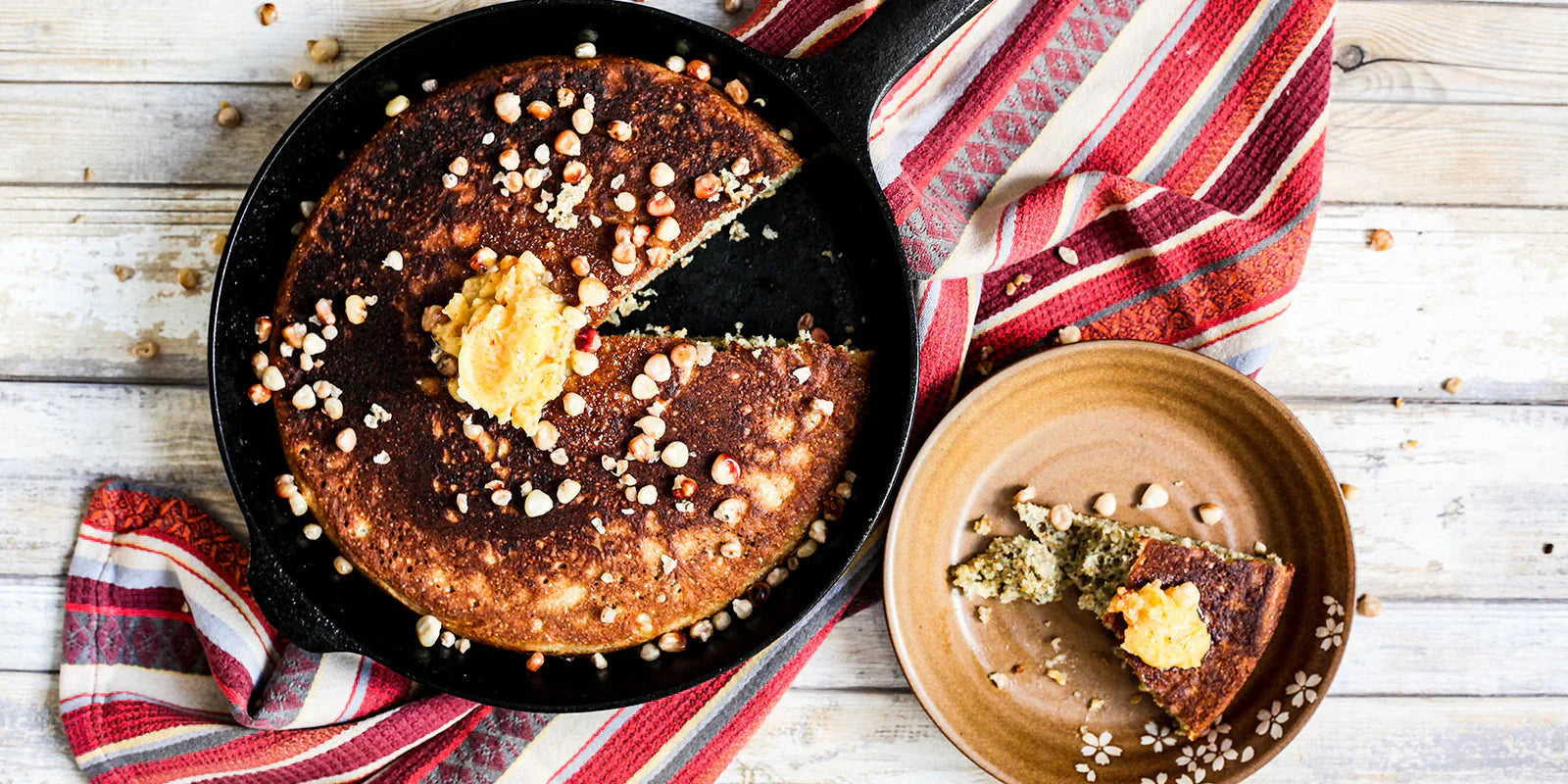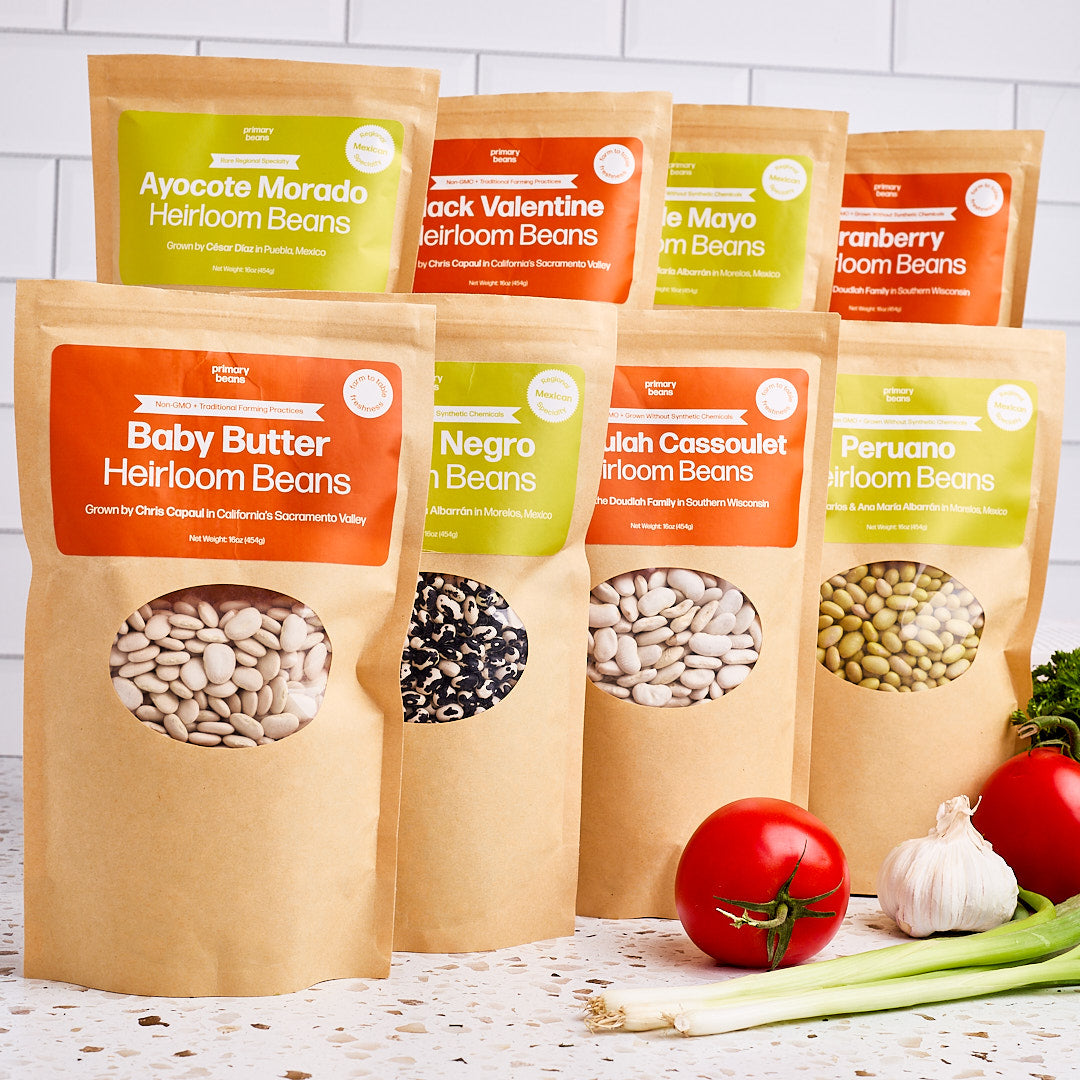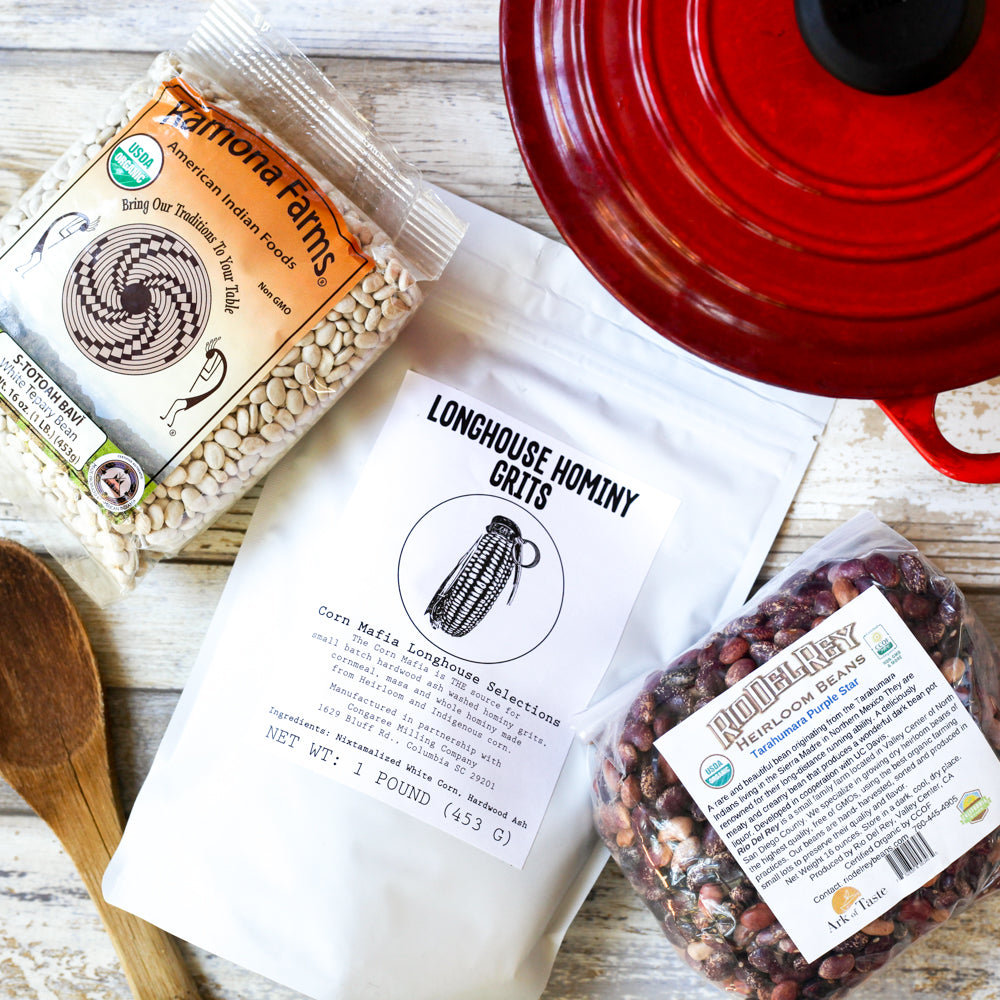10.99 FLAT RATE SHIPPING
10.99 FLAT RATE SHIPPING
SHOP

Jimmy Red Cornbread with Whole Pima Corn
June 03, 2021 4 min read
Take a bite of edible history in an easy, mouthwatering cornbread using heirloom Jimmy Red Cornmeal and Whole Pima Corn. With a crispy, perfect outside and delicate inside speckled with chewy, slightly smoky whole pima corn you'll think you've died and gone to corn heaven.
JIMMY RED CORN
This delicious Ark of Taste heirloom cornmeal is sweeter, fresher and more flavorful than conventional brands. Jimmy Red is a bright red corn with a colorful history and a celebrated reputation with chefs. Now protected in the Slow Food Ark of Taste, Jimmy Red was a Native American corn that made its way south to Florida, Georgia and the South Carolina Islands where it was largely used to create moonshine. It was not well known outside of bootlegger circles until the last of the bootleggers passed away and nearly took Jimmy Red with him. Lucky for us someone saved a couple of ears and gave them to a celebrated farmer and seed saver who found that this unique variety was good for much more than hooch. He gave seeds to several small farmers including Geechie Boy Mill who makes spectacular grits and cornmeal with the grain.
THE AMAZING HISTORY OF CORNBREAD
Cornbread has been adapted by every cook and culture that has touched it from Native Americans that invented it to enslaved people who made it into what we know today. Native Americans were making cornbread for thousands of years before European settlers came to our country. How it was prepared varied by region and tribe. The Hopi people boiled it into something we would consider a dumpling and they made small, flat pancake style cakes that are the culinary ancestor to our modern cornbread. Other tribes added fats, berries and nuts.
European colonists combined it with flour and added eggs and sometimes yeast to make it lighter and more like the bread they were accustomed to. Along the North Eastern seaboard Johnnycakes were a favorite. What we largely think of as cornbread though is largely owed to enslaved people in the south who adapted dishes like "kusha" from West Africa to use this new world grain.
In the south the debate of sugar or no sugar in cornbread is a heated one that tend to fall along race lines. You'll find many white southern cooks that will swear cornbread containing sugar is cake not cornbread. It turns out though that no-one added sweetener to cornbread prior to the early 1900s. Sugar was expensive and cornbread is a humble dish. Southern cornbread included lard or bacon fat and no sugar or honey. Most people served it with plenty of sorghum syrup or honey to drizzle on top and didn't find the need to sweeten the bread itself. Around 1910 tough we start to see black cookbook recipes call for sugar. Food historians believe this is due to changes in cornmeal from industrialized farming and milling. The white south though continued using more expensive cornmeal and kept making it without sugar beginning the great debate over what should be considered true southern cornbread.
Ingredients:
- ½ cup Jimmy Red Cornmeal
- ⅔ cup plus ¼ cup all-purpose flour
- 2 tablespoons sugar
- 1 teaspoon baking powder
- ½ teaspoon salt
- 1 egg and 1 egg white, beaten
- 1 cup plus 1 tablespoon milk
- ¼ cup clarified butter or ghee (melted but not hot)
- ½ cup pima whole corn (soaked in water overnight)
- Butter to grease the skillet
- Honey butter, for serving
- Sea Salt for serving
Directions:
- Using a cast iron skillet is a must for this recipe. By flipping the cake part way through the cooking process you end up with that oh so important crispy top and bottom.
- Heat the oven to 450 degrees.
- Pour the corn and water into a small pan and cook the pima corn on medium heat until tender but still toothy, about 20 minutes.
- In a large bowl, whisk together the cornmeal, flour, sugar, baking powder and salt.
- In a separate bowl, whisk together the eggs and milk. Fold the wet ingredients into the dry ingredients, then fold in the clarified butter.
- Add most of the corn to the batter, reserving a couple tablespoons of corn to sprinkle on top.
- Heat a cast iron skillet over medium-high heat until hot. Add a small pat of butter to the pan, swirling the pan until the butter is melted and bubbly. Pour in the batter, spreading the batter so it reaches the edges of the pan.
- After the edges have started to turn brown and bubble a bit (about 2 minutes) move the skillet into the heated oven.
- Bake until it is mostly set but still jiggles slightly in the center (about 5 minutes). Remove from oven and carefully flip the cornbread with a long spatula so that the browned bottom is now on the top.
- Cook on the stovetop on medium heat another 2-3 minutes until it is cooked through.
- Server with honey butter and sprinkle with additional pima corn and sea salt.
Jimmy Red Cornbread with Whole Pima Corn
Rated 5.0 stars by 1 users
Category
Bread
Cuisine
Southern American
Take a bite of edible history in an easy, mouthwatering cornbread using heirloom Jimmy Red Cornmeal and Whole Pima Corn. With a crispy, perfect outside and delicate inside speckled with chewy, slightly smoky whole pima corn you'll think you've died and gone to corn heaven.

Ingredients
-
½ cup Jimmy Red Cornmeal
-
⅔ cup plus ¼ cup all-purpose flour
-
2 tablespoons sugar
-
1 teaspoon baking powder
-
½ teaspoon salt
-
1 egg and 1 egg white, beaten
-
1 cup plus 1 tablespoon milk
-
¼ cup clarified butter or ghee (melted but not hot)
-
½ cup pima whole corn (soaked in water overnight)
-
Butter to grease the skillet
-
Honey butter, for serving
-
Sea Salt for serving
Directions
Using a cast iron skillet is a must for this recipe. By flipping the cake part way through the cooking process you end up with that oh so important crispy top and bottom.
Heat the oven to 450 degrees.
Pour the corn and water into a small pan and cook the pima corn on medium heat until tender but still toothy, about 20 minutes.
In a large bowl, whisk together the cornmeal, flour, sugar, baking powder and salt.
In a separate bowl, whisk together the eggs and milk. Fold the wet ingredients into the dry ingredients, then fold in the clarified butter.
Add most of the corn to the batter, reserving a couple tablespoons of corn to sprinkle on top.
Heat a cast iron skillet over medium-high heat until hot. Add a small pat of butter to the pan, swirling the pan until the butter is melted and bubbly. Pour in the batter, spreading the batter so it reaches the edges of the pan.
After the edges have started to turn brown and bubble a bit (about 2 minutes) move the skillet into the heated oven.
Bake until it is mostly set but still jiggles slightly in the center (about 5 minutes). Remove from oven and carefully flip the cornbread with a long spatula so that the browned bottom is now on the top.
Cook on the stovetop on medium heat another 2-3 minutes until it is cooked through.
Server with honey butter and sprinkle with additional pima corn and sea salt.
Recent Articles
About Us
Foodocracy is dedicated to creating a more sustainable and independent food system. We support small, independent farms across the nation.
Related Recipes
Get impossible to find beans and grains shipped direct to your doorstep each month from small family farms.
We support small, family owned farms across the nation. Did you know that farmers only make an average of 10 cents on every dollar you spend at the supermarket? Working directly with farms and not middle men ensures that more money goes back to the people actually growning your food.
Get 10% Off
Sign up for delicious recipes and special offers.
**Regularly priced items only.






